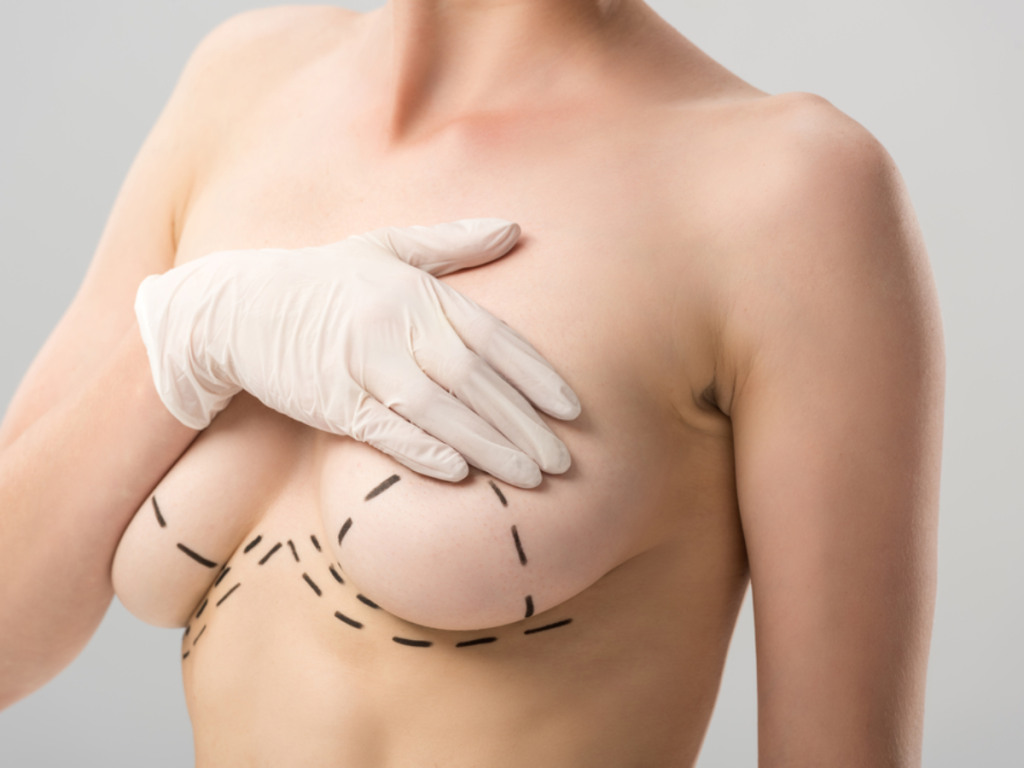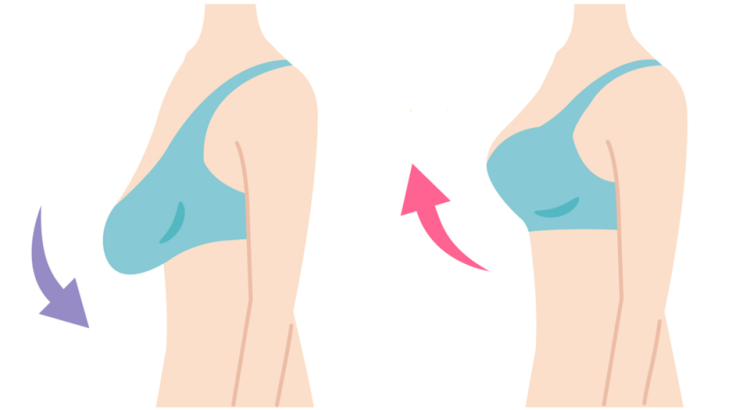Contents;
Understanding Breast Lift Surgery

A breast lift surgery, also known as a mastopexy, is a cosmetic procedure performed to lift and reshape sagging breasts. This surgery can help to restore a more youthful appearance and improve self-confidence in women who are unhappy with the shape, volume, and position of their breasts. It is important to understand that a breast lift surgery does not increase the size of the breasts, but it can be combined with a breast augmentation procedure to achieve desired results.
During a breast lift surgery, excess skin is removed, the breast tissue is reshaped, and the nipples are repositioned to create a more lifted and youthful appearance. The procedure can also reduce the size of the areolas if they have stretched over time. The surgery is typically performed under general anesthesia and can take several hours, depending on the complexity of the case.
One common reason women seek breast lift surgery is due to the effects of aging, pregnancy, and breastfeeding. These factors can cause the breasts to lose volume, sag, and lose their firmness. Other factors that may contribute to the need for a breast lift include weight fluctuations, genetics, and the natural aging process.
Determining The Need For Breast Lift Surgery

Determining the need for breast lift surgery is a personal decision that can be influenced by various factors. One of the main reasons women consider this procedure is to restore sagging breasts to a more youthful position. As women age, the breasts naturally lose their firmness and elasticity, causing them to droop. This can be exacerbated by factors such as pregnancy, breastfeeding, weight loss, and genetics. Another common reason for considering a breast lift is dissatisfaction with the shape and appearance of the breasts. Some women may have breasts that are asymmetrical or have elongated nipples, which can affect their self-confidence and body image.
In addition to aesthetic concerns, certain physical discomforts may also indicate the need for a breast lift. For example, women with significantly sagging breasts may experience chronic back, neck, or shoulder pain due to the strain placed on their upper body. The excess skin and weight of sagging breasts can also lead to skin irritation and rashes in the breast crease area. Consequently, a breast lift can not only improve the appearance of the breasts but also alleviate these discomforts, improving overall quality of life.
It is important to note that determining the need for a breast lift surgery should be a collaborative decision between the patient and a qualified plastic surgeon. During a consultation, the surgeon will assess the patient’s physical characteristics and discuss their goals and expectations. They will evaluate the degree of breast ptosis (sagging) and consider factors such as breast size, skin elasticity, and nipple position. Based on this evaluation, the surgeon will recommend the most appropriate surgical technique, such as a traditional breast lift or a modified technique with the addition of implants.
Consultation And Preparing For The Procedure

When considering breast lift surgery, it is crucial to go through a thorough consultation process and adequately prepare for the procedure. This initial step plays a vital role in ensuring that the surgery is safe and successful. During the consultation, you will have the opportunity to discuss your expectations, ask any questions you may have, and learn about the different aspects of the surgery. The surgeon will assess your breast shape and size, evaluate your health condition, and discuss the surgical options available to you.
During the consultation, it is essential to be open and honest with your surgeon about your medical history, including any previous surgeries, medications, or health conditions. This information is crucial in determining your eligibility for the procedure and understanding any potential risks or complications that may arise.
Furthermore, the surgeon will thoroughly explain the procedure itself, including the incision techniques, breast shape and size adjustments, and the expected outcome. They will also discuss the anesthesia options, recovery process, and any post-operative care that may be required.
The Breast Lift Surgical Technique

A breast lift, also known as mastopexy, is a surgical procedure that aims to lift and reshape sagging breasts. This technique is commonly performed on women who are unhappy with the appearance of their breasts due to factors such as age, pregnancy, weight loss, or genetics. Breast lift surgery is a popular solution for women seeking to regain a more youthful and lifted appearance. It is important to understand the surgical technique involved in the breast lift procedure to make an informed decision.
During a breast lift surgery, the surgeon will first administer anesthesia to ensure the patient’s comfort throughout the procedure. Once the anesthesia takes effect, the surgeon will make incisions on the breasts, following the predetermined surgical plan. The incision pattern may vary depending on the degree of sagging and the desired outcome. Commonly used incision patterns include the anchor, lollipop, and doughnut techniques.
The anchor technique involves an incision around the areola, followed by a vertical incision from the bottom of the areola to the breast crease, and a horizontal incision along the breast crease. This technique is suitable for individuals with significant sagging and excess skin. The lollipop technique is similar but does not include the horizontal incision along the breast crease. It is often suitable for moderate sagging. The doughnut technique, also known as a periareolar lift, involves only a circular incision around the areola and is suitable for individuals with mild sagging.
Once the incisions are made, the surgeon will carefully lift and reshape the breast tissue to achieve the desired contour. The excess skin is removed, and the nipple-areola complex is repositioned to a higher position on the breast mound. If necessary, the surgeon may also reduce the size of the areola to achieve better proportion and symmetry. After the desired shape and position are achieved, the incisions are carefully closed using sutures.
| Advantages | Disadvantages |
|---|---|
|
|
While the breast lift surgical technique provides numerous benefits, it is important to be aware of the potential risks and complications associated with the procedure. Scarring is a common concern, and although efforts are made to minimize scarring, it is an inevitable outcome of surgery. Additionally, like any surgical procedure, breast lift surgery carries risks such as infection, bleeding, adverse reaction to anesthesia, and changes in breast sensation. It is crucial to thoroughly discuss these potential risks with your surgeon during the consultation phase.
In conclusion, the breast lift surgical technique is a reliable and effective method for lifting and reshaping sagging breasts. By understanding the different incision patterns and the goals of the procedure, individuals can make an informed decision about whether breast lift surgery is the right choice for them. Consultation with a reputable and experienced plastic surgeon is essential to assess candidacy, determine the appropriate surgical technique, and achieve the desired outcomes.
Recovering From Breast Lift Surgery

Recovering from Breast Lift Surgery is an important phase in the overall journey of the procedure. Understanding the recovery process can help patients prepare themselves mentally and physically, ultimately leading to a smoother and more comfortable healing experience.
After the surgery, it is common for patients to experience some discomfort, swelling, and bruising. The surgeon may prescribe pain medication to alleviate any postoperative pain. It is essential to follow the surgeon’s instructions regarding medication timings and dosage. Ice packs can also be applied to the breasts to reduce swelling and bruising during the initial days.
During the recovery period, it is crucial to take proper care of the incision sites. The surgeon will provide specific instructions on dressings, postoperative bra usage, and proper hygiene practices. It is advisable to avoid any strenuous activities, heavy lifting, or exercise for a few weeks to allow the body to heal and minimize the risk of complications.
Expected Results And Long-Term Benefits

Undergoing a breast lift surgery can bring about a transformation in both the physical appearance and emotional well-being of an individual. By lifting and reshaping the breasts, this procedure aims to provide a more youthful and rejuvenated look to women who are unhappy with the sagging or drooping of their breasts. Following a successful breast lift surgery, one can expect to see a significant improvement in the shape and position of their breasts. The breasts will appear firmer, perkier, and more youthful, giving the individual a newfound sense of confidence and satisfaction with their appearance.
Moreover, the long-term benefits of a breast lift surgery extend beyond the physical aspect. Many women who have undergone this procedure report an improvement in their self-esteem and body image. They no longer feel self-conscious about the appearance of their breasts and are able to enjoy activities and clothing styles that they may have previously avoided. This newfound confidence can have a positive impact on various aspects of their lives, including personal relationships, social interactions, and overall quality of life.
Risks And Complications Of Breast Lift Surgery

While breast lift surgery can provide women with improved breast shape and firmness, it is important to be aware of the potential risks and complications that may arise from the procedure. Like any surgical operation, there are inherent risks involved, and it is crucial for patients to have a thorough understanding of these beforehand.
One of the common risks associated with breast lift surgery is infection. Although rare, this can occur if proper sterilization protocols are not followed or if the wound is exposed to bacteria during the recovery period. Signs of infection include excessive pain, redness, swelling, and discharge. If any of these symptoms occur, it is crucial to contact your surgeon immediately.
Another risk to consider is the potential for scarring. While every effort is made to minimize scarring, it is important to keep in mind that breast lift surgery involves incisions. These incisions are carefully placed to minimize their visibility, but some scarring is inevitable. However, most patients find that the benefits of the procedure outweigh the appearance of scars.
- Other possible complications include:
| Bleeding: Although uncommon, excessive bleeding can occur during or after the surgery. This may require additional medical intervention to address the issue. |
| Changes in sensation: Some patients experience temporary or permanent changes in nipple or breast sensation after the surgery. This can include decreased sensation or increased sensitivity. |
| Asymmetry: While it is the goal of breast lift surgery to create symmetrical breasts, there may be minor differences in size, shape, or position between the two breasts. |
| Delayed wound healing: In some cases, the incisions may take longer to heal than expected. This can be influenced by factors such as the patient’s overall health, smoking habits, or poor wound care. |
It is important for patients to discuss these potential risks and complications with their surgeon during the consultation and pre-operative planning phase. By having a comprehensive understanding of the potential outcomes, patients can make informed decisions about whether breast lift surgery is the right choice for them. Your surgeon will guide you through the process and provide individualized recommendations based on your unique circumstances.
